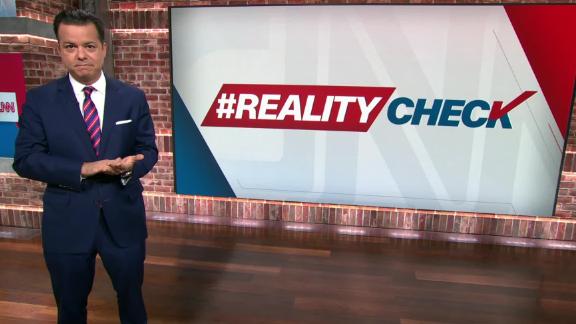How we’ve overcome past pandemics

These are strange and difficult days. We are living through a pandemic — and everything normal about our daily lives has been put on hold. A hug or a handshake could spread a deadly disease that is already galloping out of control.
It will get worse before it gets better. More people will get sick and some will die. But we will get through this.
Do you know how we can say that with certainty? Because we’ve been through far worse before.
Just over 100 years ago, the world suffered through the Spanish influenza epidemic. Despite its name, most researchers believe it actually began at a Kansas army base in the spring of 1918. It killed between some 50 million worldwide — including members of my family — and over 675,000 people died here in the United States at a time when our population was one-third its current size.
To put it in perspective, that’s more Americans than were killed in World War I, World War II, the Korean War and in Vietnam … combined.
It had a 2% mortality rate, according to the CDC — around twice what experts believe to be the mortality rate of the coronavirus – and 20 times the common flu. Thankfully, medical science has improved dramatically since then, when public health was in its infancy.
But the lessons to be learned from the Spanish influenza epidemic are primarily what not to do.
The government was in denial at first. President Woodrow Wilson never spoke about in in public, despite being afflicted with it himself. It was believed that talking about the virus could hurt morale as the country emerged from World War I.
While public schools and the Supreme Court were shut down in Washington, the US surgeon general told people “there is no cause for alarm if precautions are observed.”
In Philadelphia, local officials ignored public health warnings and allowed a massive patriotic parade to continue days after a ship carrying soldiers home from Europe arrived in port. Within 10 days, according to one historian, there were more than 1,000 Philadelphians dead and an estimated 200,000 sick.
Despite that, the mayor of Pittsburgh, on the western edge of the same state, resisted orders to close restaurants and bars, saying that it didn’t seem to be affecting his city in big numbers. It soon did. Other cities like Denver and Cheyenne, Wyoming, reopened too early and deaths spiked again.
Eventually, the Spanish flu ran its course. But the human cost was staggering. We didn’t have the science to combat or contain it.
We need to apply the lessons of history to avoid repeating them.
First, truth and transparency matter. As John M. Barry, the author of “The Great Influenza,” told the Washington Post: “the number one lesson … is that if you want to prevent panic, you tell the truth.”
Second, social distancing works — this isn’t rocket science. They knew enough to do it in 1918. It worked then in the cities that imposed it early, like St. Louis. So stay home if you can.
Third, practice good personal hygiene: washing your hands is essential and wearing masks can help from passing the virus on — if you can get your hands on one.
Finally, listen to public health experts. Science matters. We’ll innovate our way out of this but it’s going to take time to find a treatment let alone a vaccine.
Over the past century, we’ve beaten back fearsome diseases like polio, which preyed primarily on children and is widely believed to have paralyzed Franklin Delano Roosevelt 12 years before he became president. And when US scientist Jonas Salk discovered a vaccine, he gave the rights away for free to help as many people as possible.
We’ve overcome pandemics like the largely forgotten 1957-58 flu, which killed some 1.1 million people worldwide, including 116,000 Americans. We also stopped potential pandemics like Ebola through proactive public health initiatives that helped contain its spread to West Africa. And some pandemics — like HIV — continue to afflict us, after more than half a million deaths in the US and and 32 million worldwide, despite developing drugs that now keep people alive.
If you’re feeling anxious, you’re not alone. But panic never solved a problem
It might feel like the world is ending, but it’s not. Recently, the 1987 R.E.M. tune “It’s the End of the World As We Know It” has made a comeback on the charts — but it’s the back half of that title that matters most…”as we know it.”
The world has changed and it won’t be the same for a while. But the more we adjust our habits now the more successfully we’ll emerge.
We’ll need to learn the right lessons from the coronavirus crisis — from the inequities of our health-care system, to domestic manufacturing of critical items like masks, to a strengthened safety net for small business and freelancers. In these and many other areas, we need to reexamine whether we’ve got our priorities straight as a nation.
But know that we will get through this: especially if we learn the lessons of history and listen to science.
